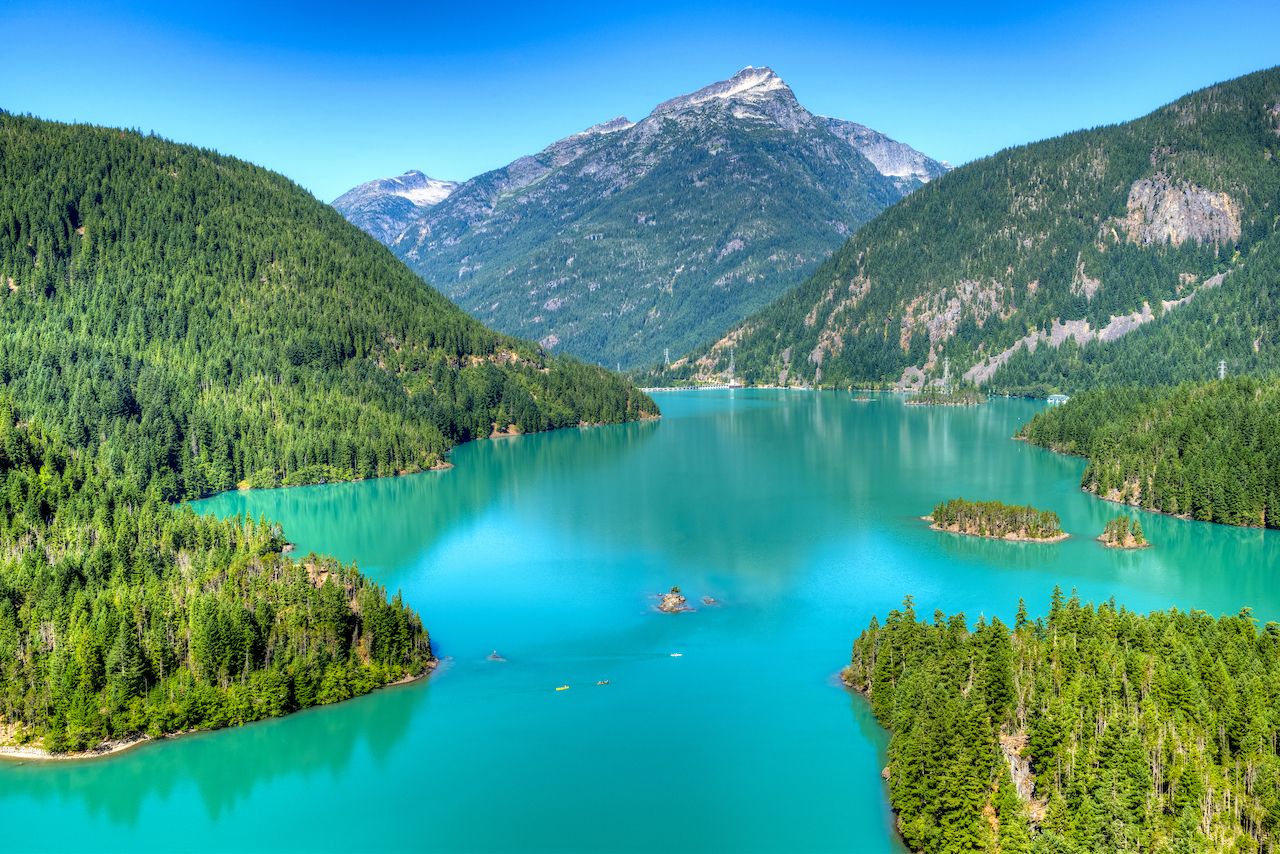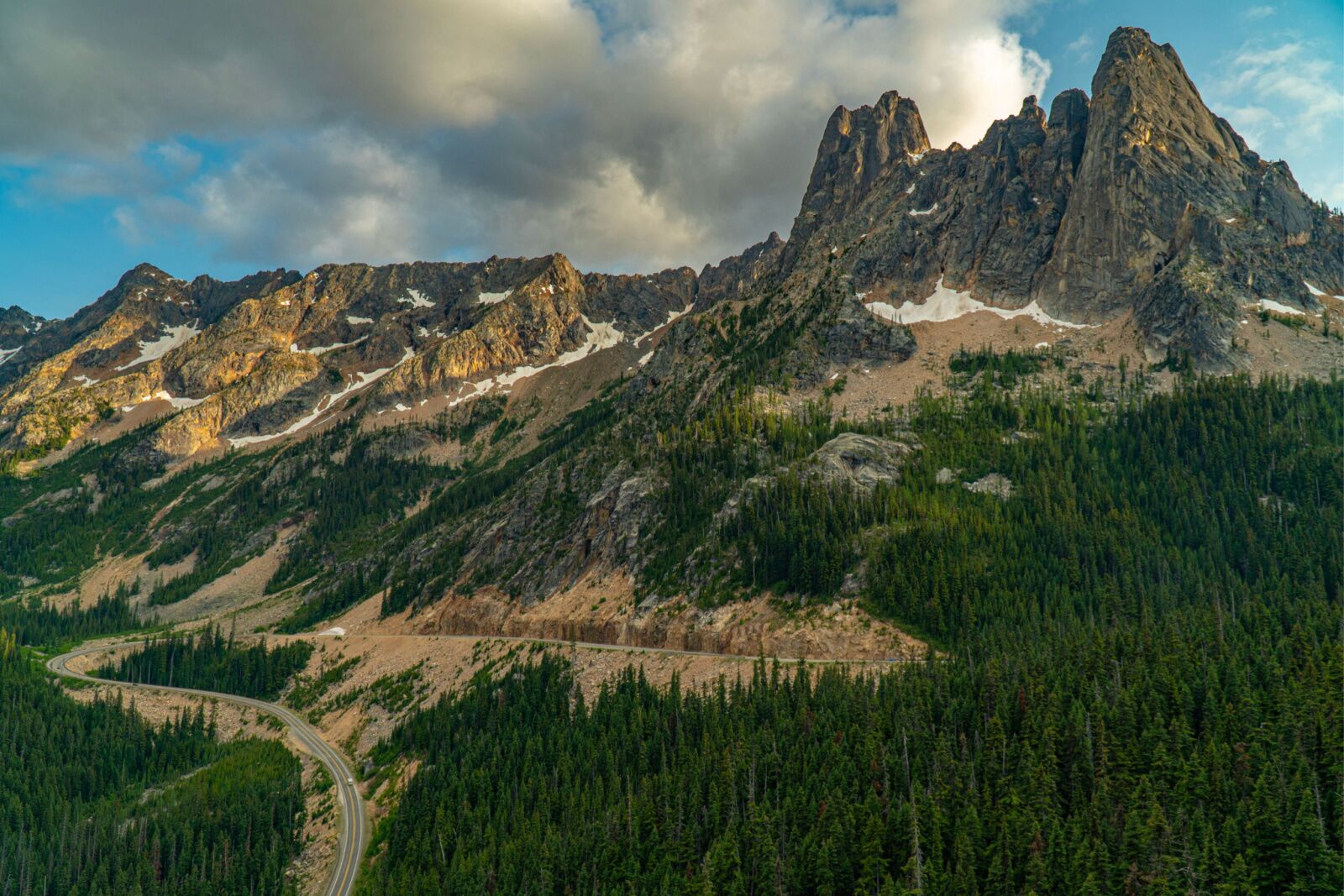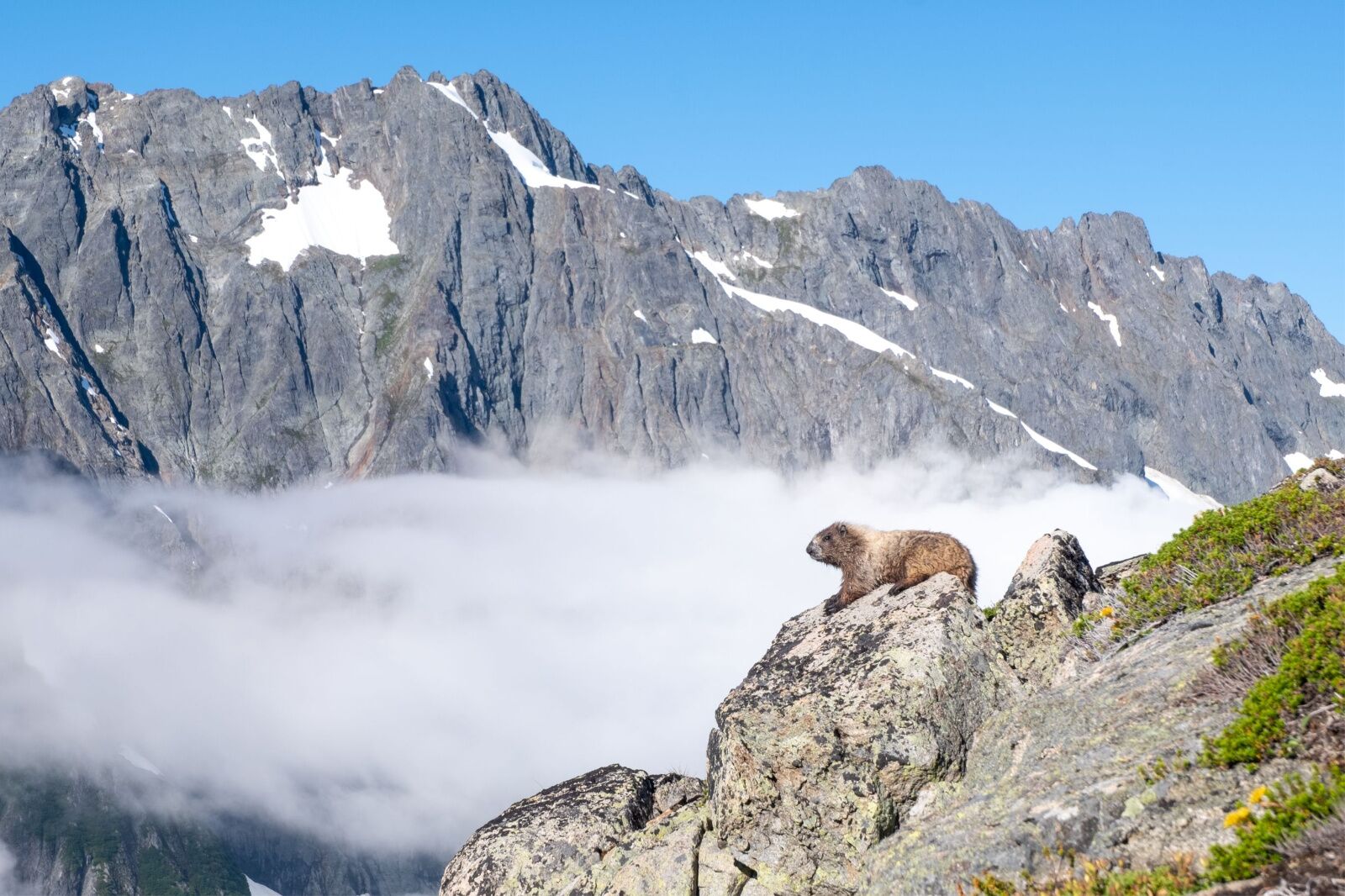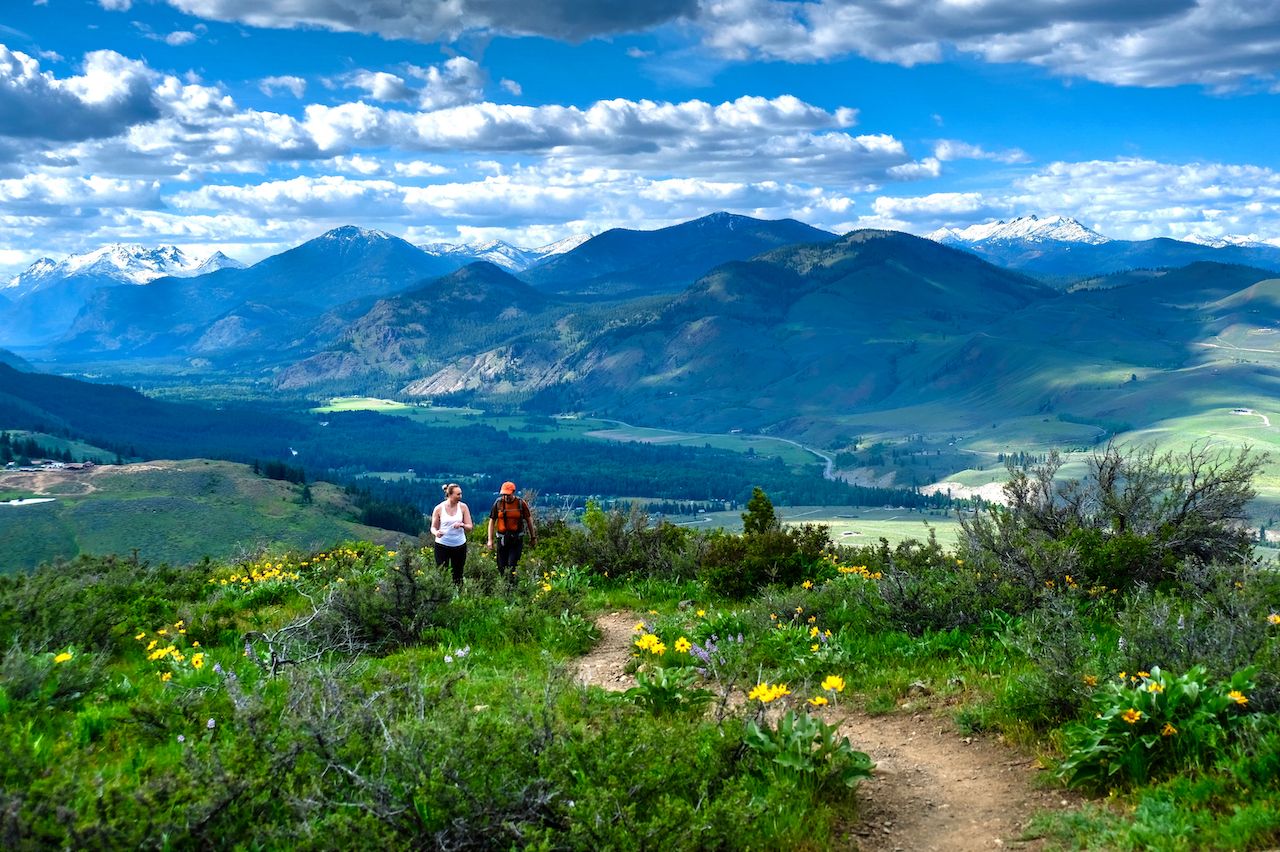Each year, only a handful of in-the-know alpinists, backpackers, and wilderness enthusiasts enter the depths of Washington’s North Cascades National Park. The park saw just 38,000 visitors in 2019, making it one of the country’s least-visited parks. It’s also the most deadly, with its untamed wilderness seeing the greatest number of deaths per visitor (mostly due to drownings).

Photo: LHBLLC/Shutterstock
Yet the park can be enjoyed safely and arrived at easily. In just two hours by car, you can trade out the drizzly coastal streets of Seattle for the snow-capped crags of granite that form the Cascade Range and hide electric-blue glaciers and vast swathes of pine forest. To fully appreciate the beauty of the park, you’ll need to lace up your hiking boots and hit the trails, because you won’t get the true experience if you treat North Cascades as a “drive-thru” park. This itinerary highlights the best way to do just that.








